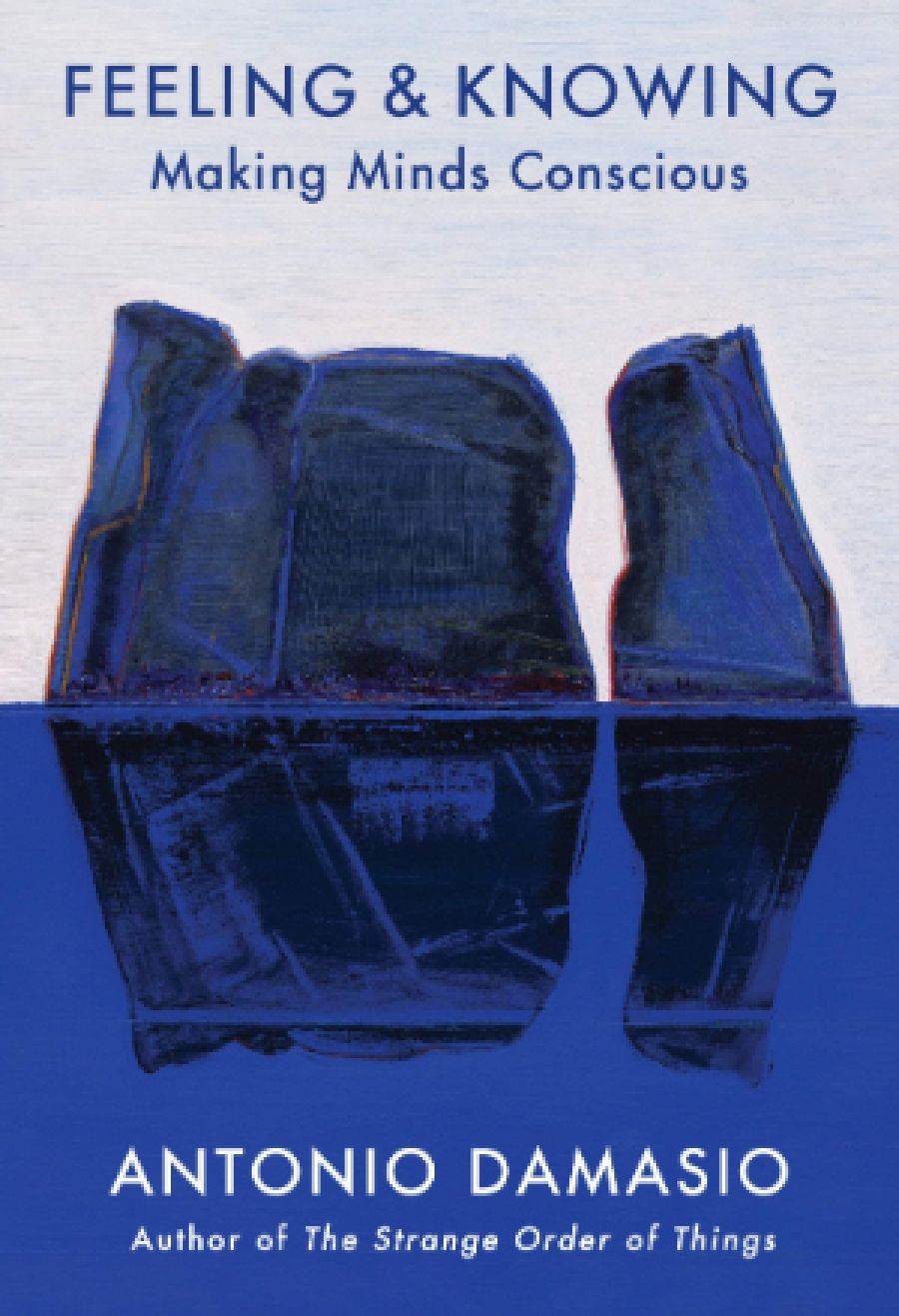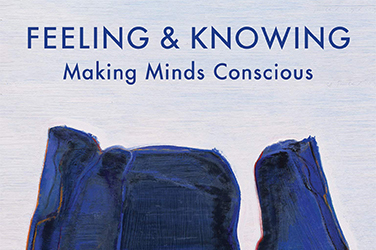
- Free Article: No
- Contents Category: Philosophy
- Review Article: Yes
- Article Title: Owning experience
- Article Subtitle: The conversation between body and mind
- Online Only: No
- Custom Highlight Text:
In Feeling and Knowing: Making minds conscious, neuroscientist, psychologist, and philosopher Antonio Damasio asks us to imagine life without consciousness. We would, he argues, still have patterns of neurochemical, sense-derived information ‘flowing in our minds, but [that information] would be unconnected to us as singular individuals’.
- Article Hero Image (920px wide):

- Article Hero Image Caption: Antonio Damasio (photograph by Basso Cannarsa/Alamy)
- Featured Image (400px * 250px):

- Alt Tag (Featured Image): Diane Stubbings reviews 'Feeling and Knowing: Making minds conscious' by Antonio Damasio
- Book 1 Title: Feeling and Knowing
- Book 1 Subtitle: Making minds conscious
- Book 1 Biblio: Hachette, $39.99 hb, 247 pp
- Book 1 Readings Link: booktopia.kh4ffx.net/GjqgJk
Key to Damasio’s interpretation of consciousness is that we know we are the owners of our mental and physical experiences. Consciousness is ‘a state of mind … [wherein] the mental contents it displays are felt, and those mental contents adopt a singular perspective’. Essentially, feelings – those neurochemical signals that ‘[mirror] the state of life within a body’ – operate as a bridge between body and mind, consciousness proceeding from our recognition that these feelings encapsulate ‘the world within [and] around’ our individual selves.
Readers who have encountered any of Damasio’s previous books – notably Descartes’ Error (1994), The Feeling of What Happens (1999), and The Strange Order of Things (2017) – will be familiar with the thesis Damasio sets out here: that it is impossible to understand consciousness without understanding both the neurochemical networks that underpin brain function and the body within which those networks are housed.
Damasio stretches the notion of consciousness beyond the mere firing of electrical connections within the brain and nervous system and, by extension, beyond articulations of consciousness that depend, for example, on the emergent properties of neural networks or the quantum effects of the electro-magnetic fields emanating from neural activity. Specifically, he stresses that consciousness arises through, and in turn feeds into, a dialogue that is constantly occurring between, in broad terms, body and brain; ‘from the brain conniving and commingling with the world within our bodies’. Consequently, there is no room in Damasio’s thesis for science-fiction scenarios in which the ‘brain’ is uploaded to a computer. To do so, Damasio asserts, would be the equivalent of uploading a recipe – you’ll have the algorithm necessary for a particular dish, but you’ll capture neither its taste nor its texture.
This emphasis on consciousness as an embodied phenomenon has made Damasio’s work of interest beyond the borders of scientific research. His rejection of Cartesian dualism and his argument that apprehending the interplay between mind and body is central to understanding both our sense of self and the evolution of culture continue to be significant influences in the fields of, for example, experiential phenomenology and affect theory.
Offering what is fundamentally an executive summary of his thinking about consciousness, Damasio makes clear at the outset that Feeling and Knowing deals solely with his ideas, deliberately omitting ‘the connective tissue and … scaffolding’ framing those ideas, an approach that has both its benefits and detriments. One of the strengths is the degree to which this configuration of Damasio’s argument underscores the evolved nature of consciousness, thus rebutting the contention that a phenomenon as complex and apparently mysterious as consciousness – much like Paley’s watch – could only be accounted for by divine intervention. Rather, as Peter Godfrey-Smith similarly demonstrated in Metazoa: Animal minds and the birth of consciousness (2020), the foundations of our own consciousness were laid down by primitive organisms aeons ago (and are still evident in, for example, bacteria), the organisms’ capacity to survive dependent on their ability to ‘[sense] others like them … [to sense] their environments … [and to respond] intelligently to what they sensed’. Crucially, the drive towards homeostasis – the optimal calibration of the environmental parameters on which life depends – is central to this response.
As biological life became more complex, Damasio argues, organisms evolved nervous systems that facilitated the neural representation of external and, vitally, internal environments, the latter through a mapping of ‘the state of [the organisms’] own bodies [as they regulate] the internal organ functions required by the necessities of life’.
These representative patterns were the first emanations of mind, and it is this ability to represent the spatial and temporal contexts of existence, to manipulate those representative images to find creative solutions when homeostasis is threatened, and thereby to nurture a conception of one’s own selfhood – one enhanced through the accretion of memories and of a personal history – that is pivotal to our comprehension of how and why consciousness developed.
Feeling and Knowing’s distillation of Damasio’s decades of research makes for a concise and accessible book. However, its truncated nature introduces as many questions as it answers, particularly in terms of the biological mechanisms by which these effects are made manifest (the occasional detours into brain anatomy offer minimal insight and are perfunctory at best). Similarly, the extent of the difference between human and non-human consciousness gets limited attention, Damasio’s note that the point of demarcation ‘sits with the scale of invention and the degree of complexity and efficiency shown in the construction of [the organisms’] responses’ to their environment barely skimming the surface.
The bite-sized chapters, although reinforcing the gradations of evolutionary adaptation from sensing to feeling to knowing that mark Damasio’s account, result in cumbersome overlaps and repetitions. Further, despite acknowledging the importance of the evidence supporting his thesis – the ‘connective tissue’ provided by case studies, brain research, and introspective accounts of consciousness as offered by writers such as Marcel Proust and Virginia Woolf – the absence of such evidence makes Feeling and Knowing seem lightweight and incomplete (and thereby ripe for misappropriation), certainly when compared to such illuminating and richly argued books as The Strange Order of Things.
Readers who have not encountered Damasio’s work before will find Feeling and Knowing a useful place to start, but for anyone who is already acquainted with his thinking, or who wants to engage with the meat of his argument, The Strange Order of Things is certainly the better option. Either way, if we are to appreciate fully the culture, creativity, and moral choices that define us as human, Damasio’s argument that we cannot unravel the nature of consciousness without recognising the continual conversation that occurs between body and mind – between ‘body chemistry and the bioelectrical activity of neurons’ – warrants our attention.


Comments powered by CComment